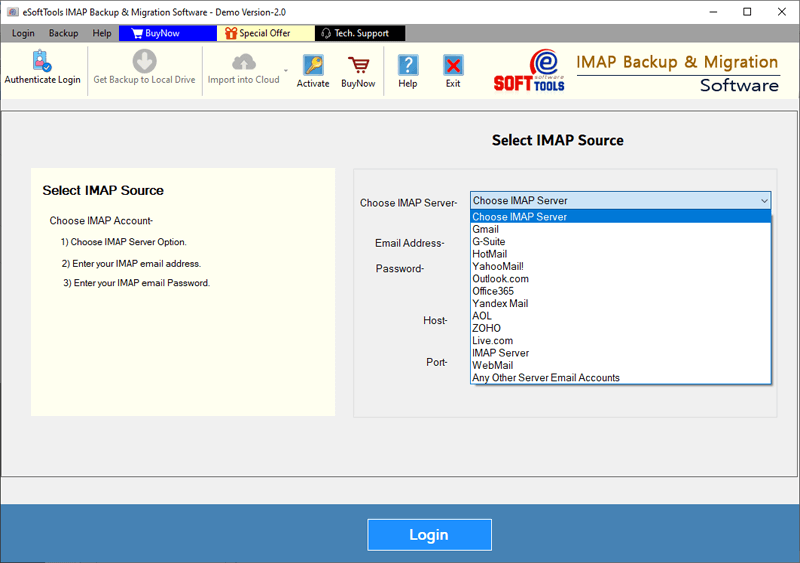
IT teams across industries must be diligent to minimize application issues and security risks from software running on their managed infrastructure. To manage this, security patches and updates are used to quickly fix any outages. There are several patch management solutions available, but choosing one can be a hectic task.
In this blog, we learn what patch management is, some of the best patch management software available, and how it can benefit your organization.
What is patch management?
Patch management is the central management of software applications, security patches, and systems. It is used on servers and workstations in an organization. Patches are used by vendors as interim software fixes for major software releases to fix or resolve any issues.
Best Patch Management Software in 2025
We have listed the 11 best patch management tools for you to check out. They are versatile, efficient and very popular among organizations. They are a variety of options and have different approaches to endpoint management. We have not listed them from best to least, but rather in alphabetical order.
1. Atera

Atera is a popular option as it offers remote IT monitoring and management, customer satisfaction surveys, ticketing, etc. It comes in separate versions for IT departments and managed service providers (MSPs). Its services include custom scripting, IT automation, network discovery, ticketing, real-time alerts, reporting and patch management.
Administrations can use a centralized interface to identify and deploy patches to macOS and Windows servers and workstations. Atera supports third-party software such as Zoom, Java, Chrome, Dropbox, Adobe products, and Microsoft Office.
The best features of Atera are:
- Improve performance
- Work with integrity
- Reliable
- Efficient
2. Automox

Automox is a cloud-native systems management platform. Automates patching, configuration, and compliance for local, remote, and cloud-based endpoints. It can inventory software and hardware by vendor and provide visibility into authorized and unauthorized applications installed on devices.
Automox can identify missing patches on 3 operating systems and a wide range of applications. Automox provides native support for Dropbox, Apple iTunes, Adobe Reader, Office 365, Slack, Notepad++, etc. It also allows administrators the option to create custom scripts and provides control over the configuration and patch management processes.
The best features of Automox are:
- 3 subscription plans available: Basic, Standard and Pro
- Notification and reporting capabilities
- Supports 3 platforms: Windows, macOS and Linux systems
3. ConnectWise automates

ConnectWise Automate, formerly known as LabTech, is an IT management tool. Helps deliver IT services through remote monitoring and management. Its RMM platform automates device discovery and management, issue tracking, and action automation.
The best features of ConnectWise Automate are:
- End-to-end automated processes
- Remote monitoring and management
- Optimize reactive and proactive management services
4. GFI LanGuard

It is an endpoint protection software that offers administrators access to check for vulnerabilities and patch software on remote and local devices, virtual machines, and servers. GFI LanGuard works on Windows devices, macOS, Linux and more than 50 applications such as Apple, Adobe, Google, Microsoft and many more.
The best features of GFI LanGuard are:
- It offers a web-based interface where administrators can export reports in PDF, RTF or CSV.
- LanGuard can scan networks automatically or on demand
- Pricing is annual, per node, or depends on the number of nodes and whether the product is purchased with other GFI products.
5. ITarian

Like most patch management tools, ITarian is a cloud-based IT management platform. Its services include IT service management, service desk, patch management, and remote monitoring and management. It is compatible with Windows and Linux operating systems and also works with 400 third-party applications.
With ITarian, MSPs can search for missing patches and automate every stage of the patch management process. Administrators can identify endpoints that are vulnerable, tag them, and automatically deploy patches at scheduled times to specific endpoints.
The best features of ITarian are:
- You can get detailed reports on the software, hardware, and patch update history on managed devices.
- It is free to use for up to 50 endpoints.
- You can test patches before deploying them
6. Kaseya VSA

Kaseya VSA is remote monitoring and management software that offers alerting, discovery, automation, and patch management. It works on Windows computers, macOS, Linux, and third-party administrations. Administrators can use Kaseya VSA to deploy, update, and patch. It offers automated patch management, which takes a configurable policy-based approach, is location-agnostic, and optimized for bandwidth.
The best features of Kaseya VSA are:
- Supports more than 100 third-party applications.
- Administrators can patch endpoints in multiple locations and domains
- Standardized software maintenance
7. Microsoft Configuration Manager

It is part of the Microsoft Intune brand that includes Intune, Autopilot, and Endpoint Analytics. Configuration Manager can perform software updates on client computers by using tools and resources. It is a local system for desktops, laptops and server management on the local server or connected over the Internet.
Configuration Manager integrates with Windows Server Update Services (WSUS) for update management. It also connects to Microsoft Update to retrieve updated metadata. Syncs can be scheduled or manually initiated by administrators using Microsoft Update.
The best features of Microsoft Configuration Manager are:
- Perform software updates
- Administrators have access to third-party software update catalogs
- Effective service provider
8. NinjaOne Patch Management

NinjaOne Patch Management, part of the NinjaOne IT operations platform, consists of a set of cloud-based services that support remote monitoring and management. It works on Windows, macOS and Linux operating systems, and more than 135 third-party Windows applications.
INinjaOne automates patch identification, approval, reporting and deployment. It also gives administrators full control over how each endpoint is patched. Management can also schedule and approve patch deployments based on your schedule.
The best features of NinjaOne Patch Management are:
- Provides administrators with real-time visibility into patch statuses.
- Administrators can generate detailed reports on endpoint compliance.
- Subscription is monthly or device-based, and you only pay for what you need
9. SolarWinds Patch Manager

SolarWinds targets Microsoft products and third-party applications for patch management. Works with Microsoft Endpoint Manager and Microsoft WSUS to patch both virtual and physical servers, workstations, and offline machines. It offers pre-built and tested update packages that administrators can use to automate the entire patching process.
Administrators have full control over the patching process, including which servers and workstations to patch, which end systems to target based on operating systems, or IP ranges. They can also specify which patches to deploy and schedule their deployment times.
The best features of SolarWinds Patch Manager are:
- Centralized web interface for all patch management tasks
- The interface has a patch status dashboard and offers built-in reporting.
- Administrators can customize reports based on specific needs.
10. SysAid

SysAid Patch Management is integrated into SysAid’s IT service management software products such as ITSM, ITSM AI and Help Desk. The patch management feature uses original equipment manufacturer (OEM) technology to provide patch management services on Windows servers, computers and third-party applications such as Skype, Mozilla Thunderbird, Mozilla Firefox, Google Chrome, etc.
This patch management solution is fully automated, highly configurable and scalable. Use a formal change management process to approve and audit the entire patching process. This ensures documentation of the patching process and proper application of security patches and updates.
The best features of SysAid are:
- It can be used in both on-premises and cloud environments.
- Customizable patch management policies
- Administrators can manage patches for individual assets or groups of assets manually.
11. Syx Sense

Syxsense, acquired by Absolute Security in 2024, is an endpoint management and security platform. It combines IT management, security vulnerability scanning, and patch management in a single cloud-based environment. You can patch Windows, Linux, and macOS systems remotely, locally, and in the cloud.
With Syxsense, administrators have control over scanning and prioritizing patches based on security risks. They also get complete information about the health of the device, which helps address potential deficiencies. Administrators also have full access to information about published patches and their severity.
The best features of Syxsense are:
- Records all patching processes for review and audit.
- You can also get detailed reports and high-level overviews.
- Fully automated patch deployments with options to customize
To know more about patch management solutions or best patch management software, follow our page.
Related: The 15 best tools to manage remote teams effectively
Related: The 6 most incredible applications of quantum computing
#Top #Patch #Management #Solutions #Secure #Systems



![Lo que realmente ayuda a reparar el iPhone atascado en modo de recuperación [6 Ways]](https://thenewshub.website/wp-content/uploads/2025/12/image_2025-12-17_015538024-150x150.png)






